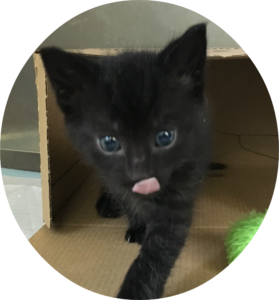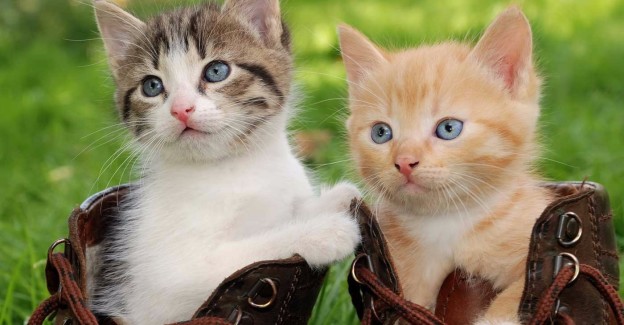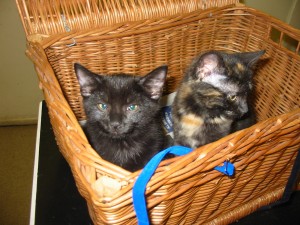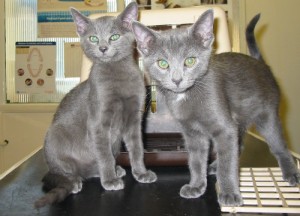
Kittens and adult cats are much less likely to bite and scratch us if they have been socialised and handled well when young. When you bring your kitten home from the start make sure you and your family handle the kitten on a regular basis, so he or she gets used to being held and handled by a variety of people. To help with the handling process gently run through touching your kittens feet and claws (encase you need to clip their nails in the future) looking at their eyes and into their ears and generally feeling them all over.
Socialisation:
Kittens have two very important periods of socialisation when they learn normal behaviour, towards other cats and people. The first period is 2-7 weeks of age when handling by various people in a positive manner will increase the likelyhood of them having a friendly approach in future interactions with people. Always make sure you are gentle with your kitten and that any young children at supervised when they are around your kitten.
Kittens continue to learn by social play from the age of 7 weeks, and this peaks at around 9-14 weeks of age, and so when most people first take home their new kitten around 8 weeks of age, they are still in this important socialization period.
The Do’s and Don’ts:
You should not play with your kitten using your hands or feet, and you should not use rough play, whatever the age of the kitten. Instead we recommend the use of a “fishing rod” toy or something similar that induces chasing behaviour e.g. a ping-pong ball. If your kitten displays pouncing, chasing or biting of human fingers and toes, then they should be ignored. Kittens like attention so will realise they have done something wrong if you ignore them. If you are holding your kitten when they bite or scratch you, then put them down immediately and ignore them. A few moments later a toy can be provided. Once your kitten has finished playing and is tired out, you can then stroke and make a fuss of them.




